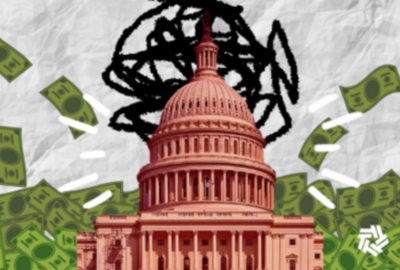
Insight by WAEPA
Open season 2021: What you need to know
Yes, premiums under the Federal Employees Health Benefits Program are going up again in 2021, but there’s a few things you need to know that may help you save...
This content is sponsored by WAEPA.
Open season is here, and shopping for health insurance during an ongoing global pandemic may be as important as ever.
With 276 plan options for 2021, participants in the Federal Employees Health Benefits (FEHB) Program have no shortage of choices.
For the Federal Employees Dental and Vision Insurance Program (FEDVIP), participants will see 12 dental and five vision options for next year.
The sheer number can be overwhelming, and it’s often why few federal employees take advantage of open season. Less than 10% of federal employees typically change their health insurance plans during a given year.
For the most part, your enrollment in FEHB or FEDVIP will continue automatically with little to no interruptions.
But if you are thinking about making a change, now is the time to act. This year’s open season runs from Nov. 9 through Dec. 14. It’s generally the one opportunity a year you’ll have to enroll or make changes to your health, dental and vision plans.
Here’s what you need to know.
Yes, you’ll pay more
FEHB premiums will go up, on average, 3.6% next year, with enrollees paying about 4.9% more for their insurance in 2021.
The government will pay about 3% more on average next year.
These are averages; you may pay more or less depending on the plan you choose.
But it pays to shop around.
Enrollees in a few national fee-for-service plans will see zero increases next year, including a few Blue Cross and Blue Shield “focus” plans, the GEHA indemnity benefits plans and a few options under the National Association of Letter Carriers.
Premiums for a few – though not many – will decrease in 2021, including those under the SAMBA nationwide “high” plans.
You can view the 2021 FEHB rates from the Office of Personnel Management here.
How to shop and what to look for
With so many options, getting started can be the most difficult part.
OPM encourages FEHB participants to think first about their expected health care needs for the upcoming year.
Will you or someone in your family need surgery in 2021? Are you expecting a baby? Will your medication needs change? With the pandemic still in full force, are there particular telehealth services that are especially important to you?
Once you have the answers to those questions in mind, OPM urges participants to review the FEHB plans and the benefits they offer.
Does your plan have a limit on how many visits you can make to your doctor? Are there any services you need that aren’t covered? How much will you pay for prescription drugs? And what telehealth services are covered?
To help you research your options and compare plans, OPM says participants should see more tools and information to find the options best suited for you.
It’s why OPM has been urging FEHB carriers for the last four years to focus on giving participants more transparency into their plans, including costs, customer service options and other features.
“In an effort to improve plan quality and affordability and in support of some of the administration’s efforts, we have focused this year on increasing access to and the quality of transparency tools that are offered by FEHB carriers to help federal enrollees find and make decisions in this complex world of health care,” Laurie Bodenheimer, acting director of OPM healthcare and insurance, said last month.
Starting this year, all FEHB plans must offer cost transparency tools. OPM’s own plan comparison tool has a new look, which the agency believes will help enrollees more easily shop around for the plans for that meet their own specific needs.
The tool, for example, now includes displays more details on high deductible health plans and consumer-driven health plans, OPM said.
In the near future, all FEHB plans must display the network contracting status of selected physicians, physician groups or services that provide urgent care in a hospital setting. The goal, OPM has said, is to help reduce surprise billing.
Some health insurance companies may already publish these details on their websites, and it pays to check in with your plan to see what information is available.
“We understand that people who need urgent care aren’t, in that moment, thinking about whether their provider is in network,” Bodenheimer said. “But we would encourage enrollees as part of their planning to look at the hospital that they would most frequently possibly utilize based on the physicians that they see, and check ahead of time to make sure that all of the providers that might be involved in their care are in-network providers.”
More plans offering partial Medicare part B reimbursements
If you’re a Medicare beneficiary and a FEHB participant, you may notice a few more options in 2021 that could help you save.
More FEHB carriers have expanded their options for participants who are also Medicare beneficiaries, and many offer some sort of incentive, including co-pays, co-insurance, deductible waivers and part B premium reimbursements.
A total of 25 FEHB plans now offer a Medicare part B partial reimbursement, compared to last year’s 18.
OPM’s plan comparison tool should make these options more easily available to participants.
“It features a Medicare display that allows individuals to see exactly what they’ll be expected to pay if they have both Medicare A and B as their primary coverage and FEHB as their secondary coverage,” Bodenheimer said.
Copyright © 2024 Federal News Network. All rights reserved. This website is not intended for users located within the European Economic Area.
Related Stories

DOGE leaders seek telework rollback, but agencies say it improves retention



